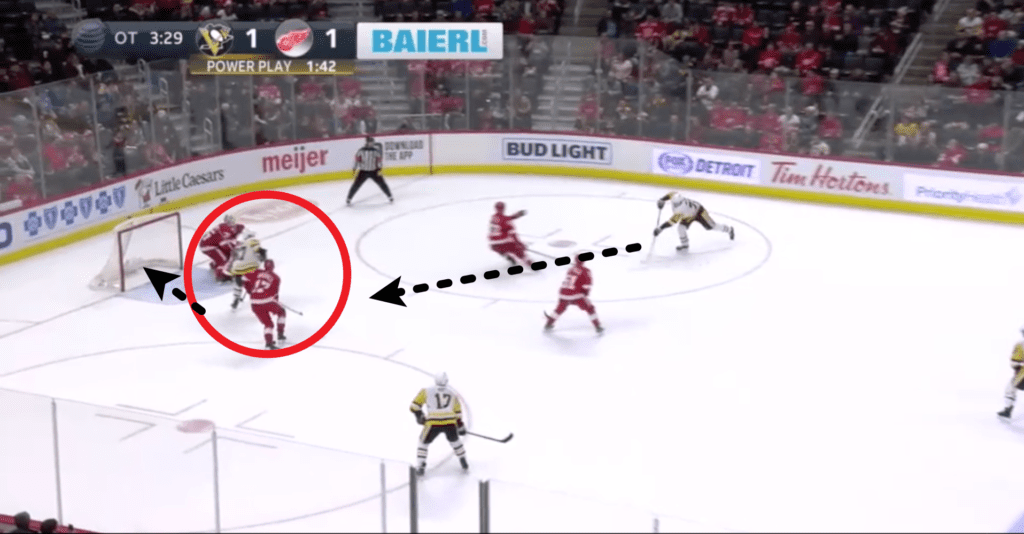Analysis
Breaking Down the Penguins Perfect Power Play Goals
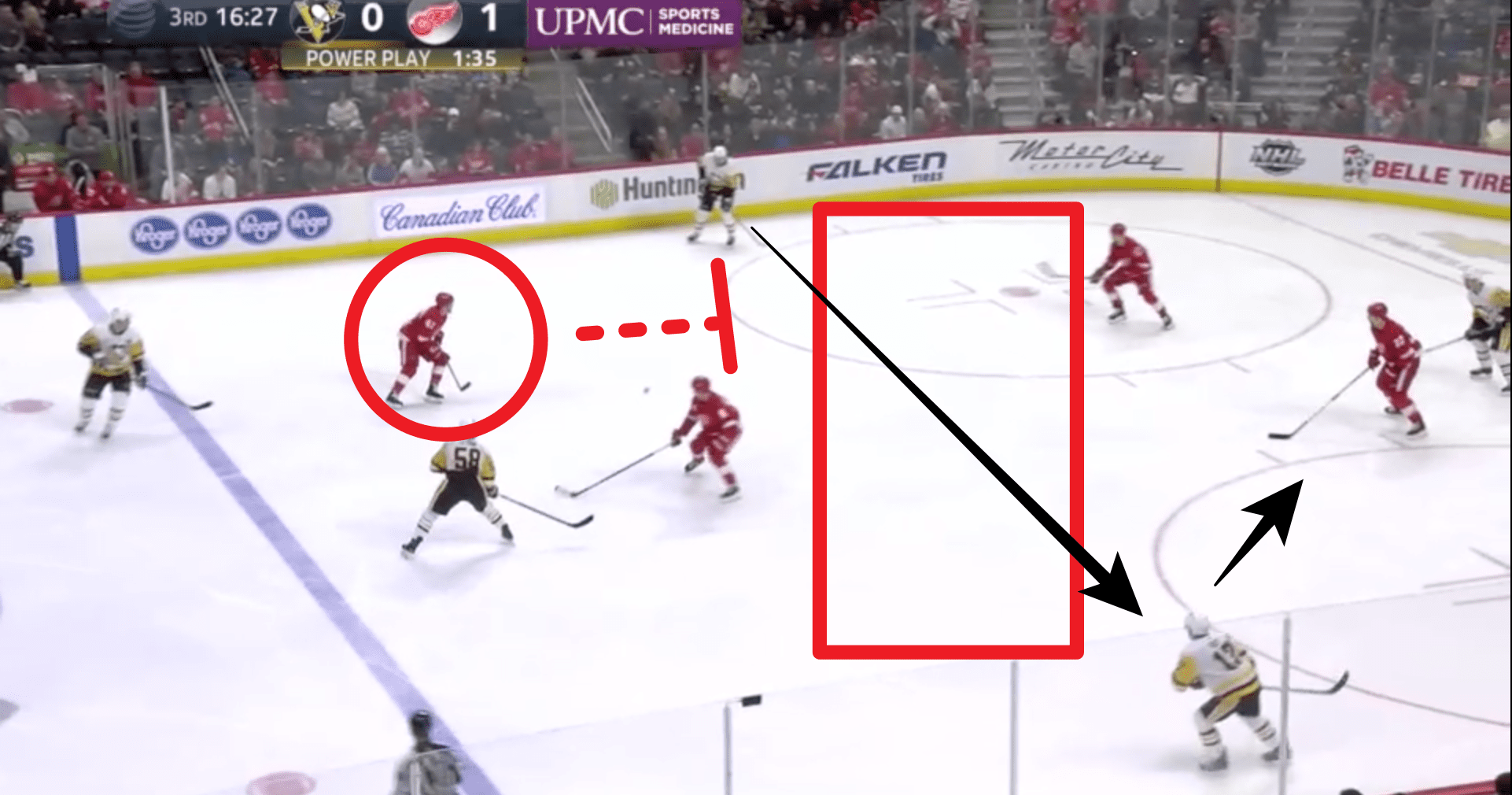
The Pittsburgh Penguins didn’t score an even strength goal on Friday night, but their two power-play goals were enough to beat the offensively challenged Detroit Red Wings 2-1 in OT at Little Caesars Arena. The Penguins, which have lost a couple of games because of overtime power plays, were given the man advantage after Detroit center Luke Glendening inexplicably knocked Jared McCann to the ice well behind the play.
The Penguins and Sidney Crosby needed only 21 seconds to score on that power play with a perfect rotation to the front of the net.
Early in the third period, Bryan Rust and the Penguins needed just 29 seconds to convert a power play for the game-tying goal.
Each of the goals was a textbook example of puck movement and player movement to scramble the Detroit PK and get open looks.
Power Play Goal #1:
Evgeni Malkin and Crosby tortured Detroit on this one. Look at the setup. Ordinary players would post up at the blue line and simply shovel the puck deep into the zone, especially with Malkin at full speed. However, Crosby aggressively skated with the puck, which forced Glendening to cover him instead of assuming his position. The first result is a Montana sky worth of open ice on the mid-wall, which Malkin seized.
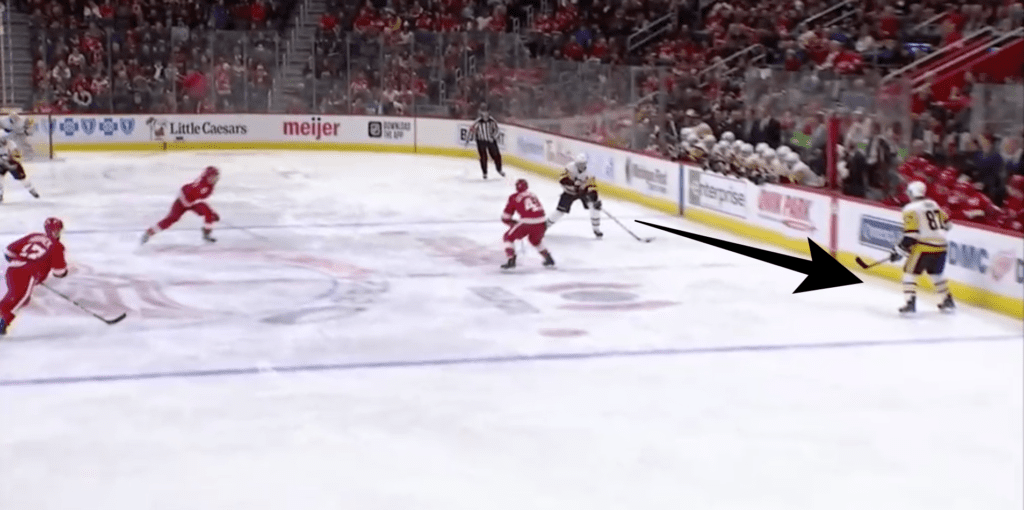
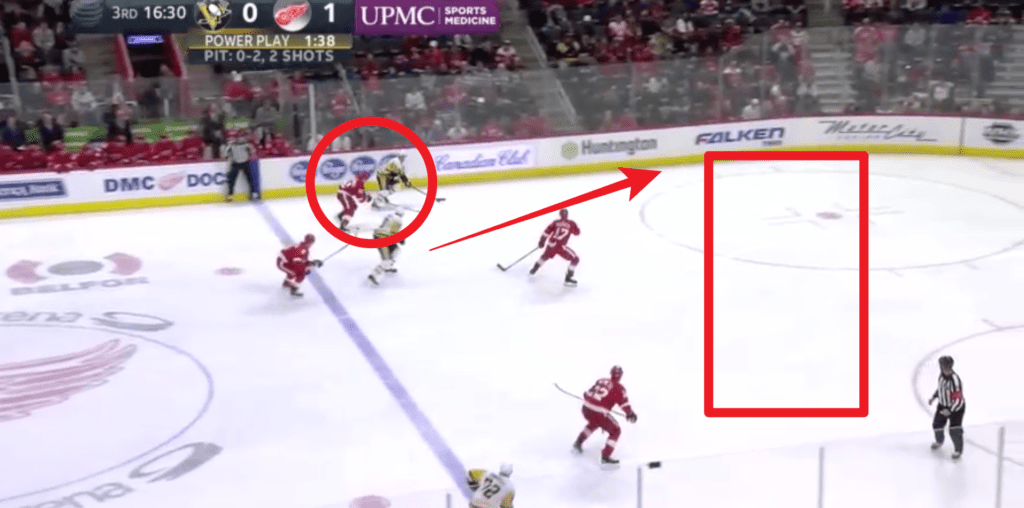
As Malkin staked the mid-wall, and with Glendening on Crosby not the top of the PK box, the middle of the ice is left WIDE open. The dotted line is where Glendening would ordinarily be, but Crosby’s puck possession pulled him out of position. The rest was up to Bryan Rust, who also made an aggressive play with the puck.
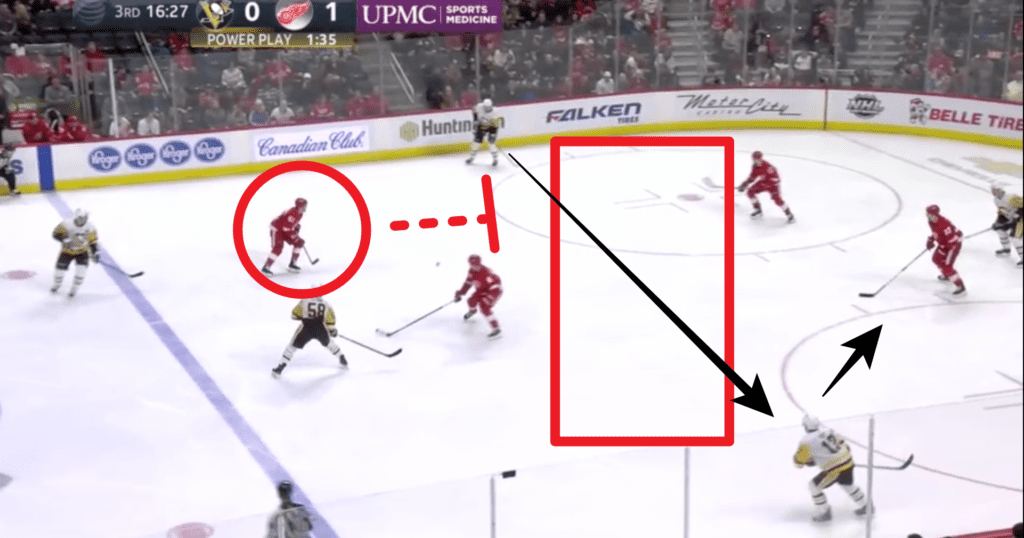
Rust could have been passive. He could have accepted the quick pass and shot from the back of the circle in hopes Patric Hornqvist would deflect it. However, the Detroit defensemen realized that Glendening was pulled out of position, and now he must defend Malkin on the wall. That prevented a quick switch in front of the net to allow Detroit defensemen to exchange coverage of Hornqvist so someone can cover Rust.
Since no one could challenge Rust. He stormed the net. Rust’s 20th goal:
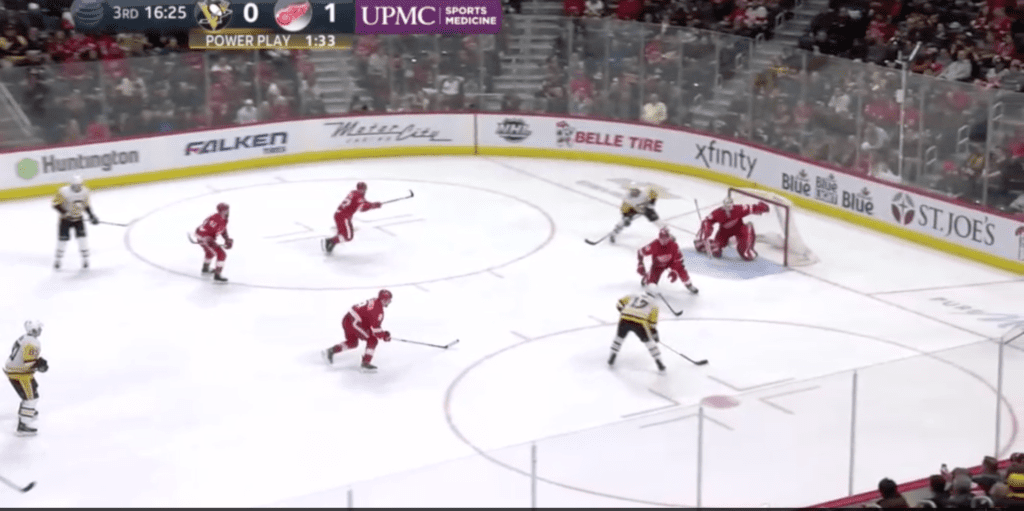
The Penguins’ lightning-fast recognition of the situation was as impressive as the execution.
Power Play Goal #2:
Again, the quick puck movement forced Detroit into a mistake. The play started with a faceoff win (Sidney Crosby), and a few seconds later, it ended with Crosby, too.
In the first frame, notice that Detroit has a solid triangle quickly set up.
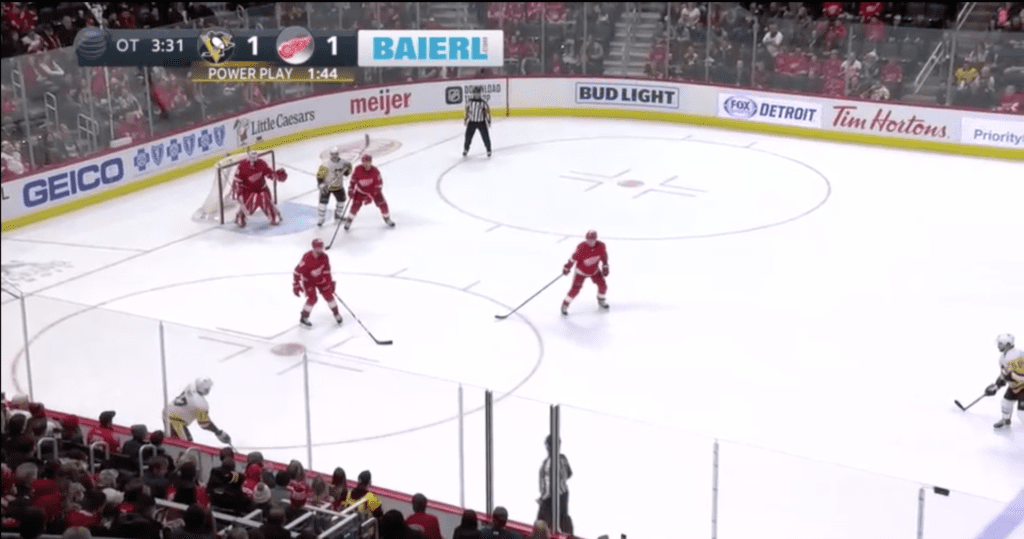
And watch how quickly the Penguins break the triangle as Malkin used the open wing. Still, the Detroit defenders again couldn’t switch quickly enough, and Crosby is uncovered in front of the net as the rearguard switches to cover Malkin. Yet, the near defender doesn’t collapse to cover (denoted by the dotted black circle and arrow).
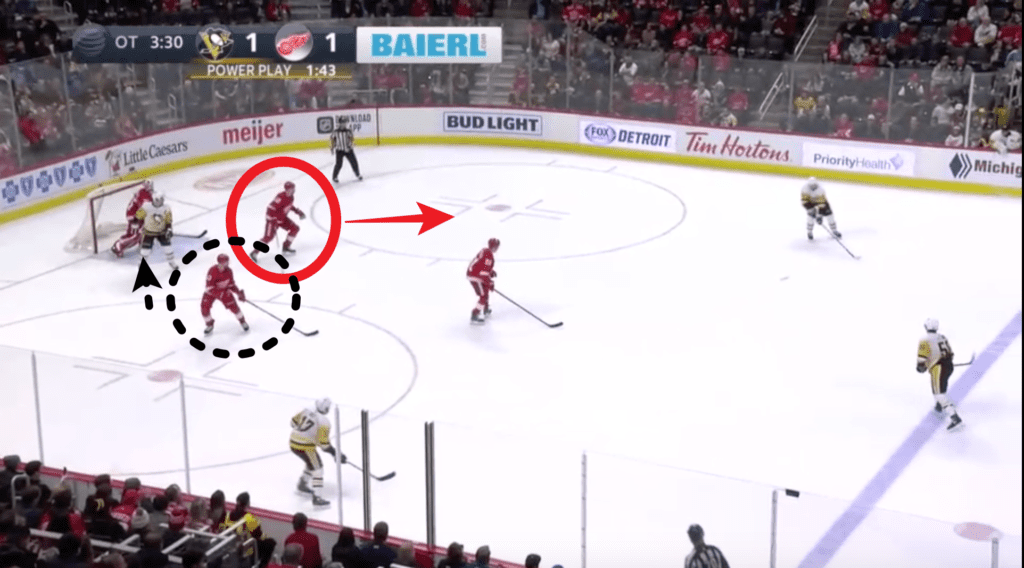
If you put Evgeni Malkin and Sidney Crosby ahead of the defense, it’s usually going to be a bad time for the goalie. In this case, Jimmy Howard didn’t have a chance. Bingo.
